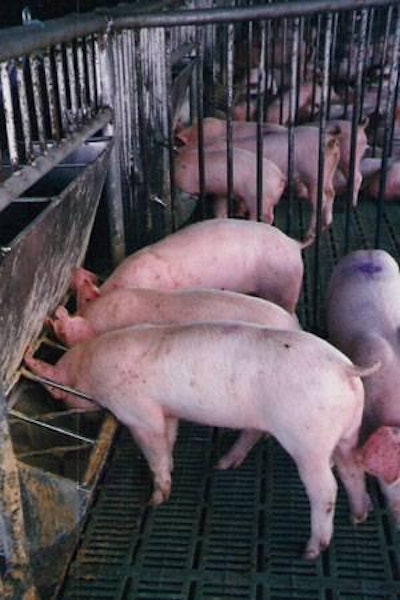
The most significant change impacting the pig industry and nutritional practices during recent years has been the dramatic increase in the cost of major feedstuffs, due primarily to droughts and ethanol production. What’s more, the cost of special ingredients for nursery diets such as fish meal and milk products has also risen. The combination of these factors has forced swine nutritionists to look thoughtfully and creatively at new and cost-effective options for pig feed.
Pros and cons of DDGS
The pig nutrition community has done an admirable job of learning how best to utilize distillers dried grains with solubles, the dominant co-product of ethanol production. Although the most valuable part of the corn, the starch, is lost during ethanol production, the remainder can be salvaged and put to good use.
Pig nutritionists have learned a great deal about DDGS and its effective use in pig diets. Positive aspects include:
- Its use can often lower diet cost significantly.
- Generally, all components of corn (except starch) are concentrated about three-fold in DDGS.
- The energy value is similar to that of corn, due to high levels of both fiber and fat.
- Phosphorus digestibility in DDGS is quite high.
Negative aspects include:
- The digestibility of amino acids, especially lysine, in DDGS is rather low and variable. However, attention to this fact has improved processing conditions. As a result, the extremely low digestibility values reported several years ago are not now generally seen.
- The high levels of polyunsaturated fatty acids can result in soft carcass fat. However, it is still possible to use rather high levels of DDGS without causing carcass fat to be soft enough to cause problems.
- The three-fold concentration of non-starch components of corn in DDGS holds for mycotoxins as well as nutrients. This three-fold concentration of mycotoxins in DDGS created special concerns about DDGS made from the 2009 U.S. corn crop, much of which had damaging levels of mycotoxins because of weather conditions late in the growing season. Mycotoxin binders and other products to reduce the impacts of mycotoxins were used widely.
Other considerations
Phosphorus nutrition. The swine industry has widely adopted the use of phytase to increase digestibility of phosphorus in plant materials, and at higher dietary inclusion levels than used a few years ago. Benefits are in lower diet cost and in reduced phosphorus excretion. There is now a strong trend to formulation on the basis of digestible phosphorus rather than available phosphorus, largely because the measurements of digestible phosphorus are easier, cheaper, and more consistent across laboratories. Some diets containing high levels of both DDGS and phytase do not require additional phosphorus supplementation.
Carbohydrases. The widespread use of DDGS with its high fiber level has spurred interest in increasing fiber digestibility by use of carbohydrase enzymes such as xylanases beyond the previous interest in using such enzymes in lower-fiber diets.
Crystalline amino acids. There has been a continuing increase in the amounts of crystalline amino acids used in swine diets during recent decades. The use of DDGS stimulates even more use of crystalline amino acids because of the relatively poor amino acid balance of the proteins in DDGS.
Other diet components
The principal role of the diet is to provide nutrients, but there is accumulating evidence that specific diet components can contribute to herd health. A few examples:
- Spray-dried plasma, besides dramatically increasing the growth rate of pigs soon after weaning, provides a degree of specific protection against enteric infections by E. coli. It also moderates inflammatory responses.
- A high level of zinc oxide markedly reduces mortality in the face of a severe outbreak of enteric disease in nursery pigs.
- Research has shown that insoluble fiber, as found in DDGS, speeds recovery from E. coli diarrhea.
- Mannan oligosaccharide derived from yeast cell wall causes complex and potentially important changes in immune function, including moderation of inflammation. It partially counteracts the immune suppression caused by a PRRS infection.
- Both certain clays and certain plant extracts (essential oils) can reduce diarrhea in pigs infected with E. coli.
Research is in its early stages in the area of dietary effects on health of pigs, but there are reasons to believe that specific physiologically-active diet components may be quite important for swine herd health. Much more progress is anticipated in coming years.




.jpg?auto=format%2Ccompress&fit=crop&h=167&q=70&w=250)












